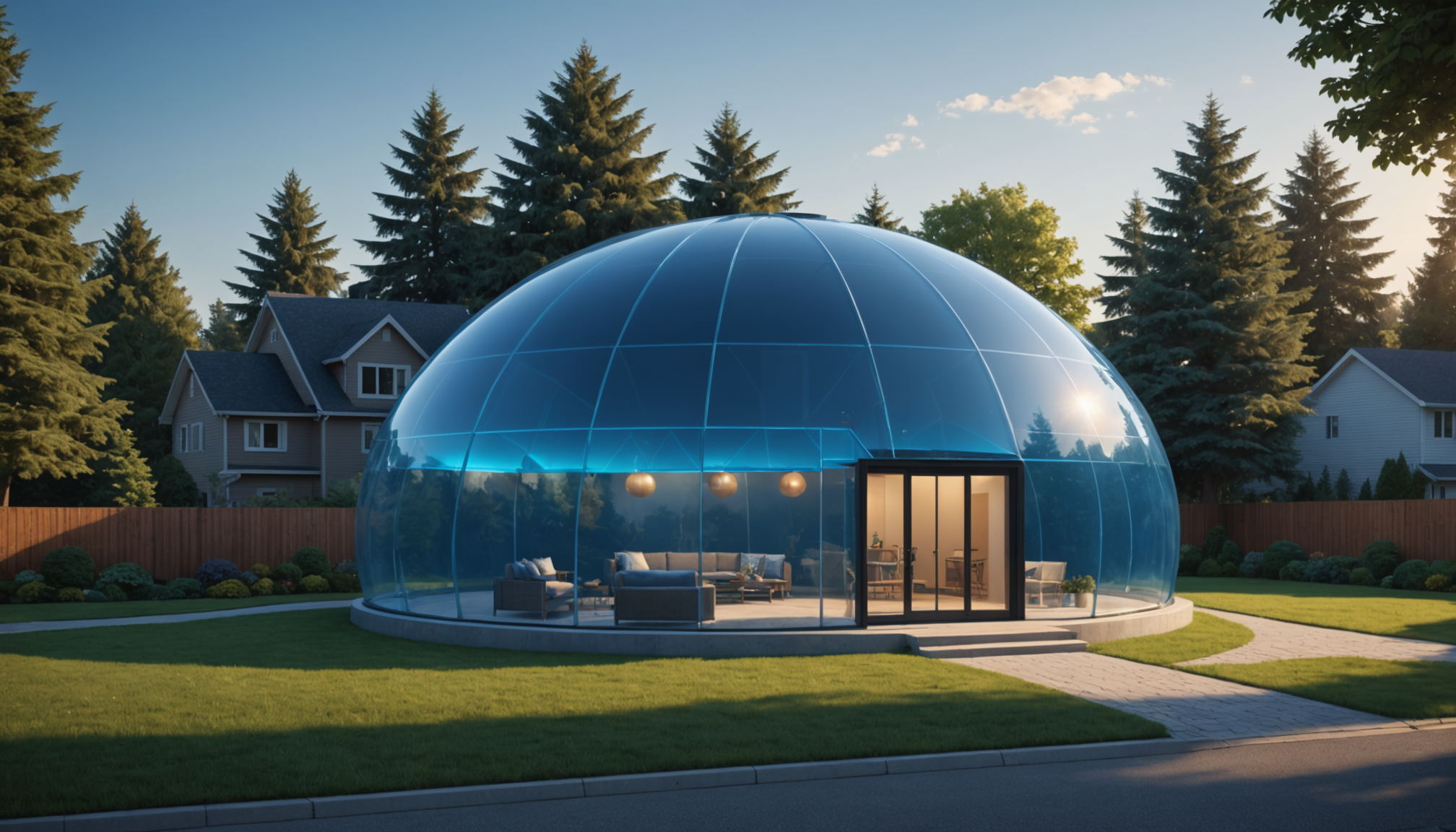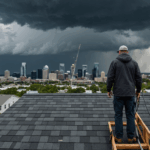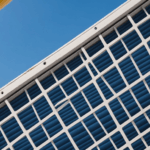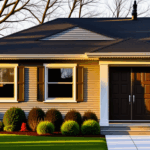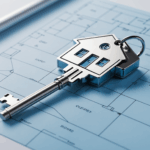New homeowners often find themselves overwhelmed when navigating the complex world of insurance policies. Understanding the different types of home insurance coverage is crucial for making informed decisions about protecting your most valuable investment. According to the Insurance Information Institute, approximately 95% of homeowners carry insurance, but many don’t fully understand their coverage.
The most common type of home insurance policy is the HO-3, which covers your home’s structure (dwelling coverage) and personal belongings against specific perils. This “special form” policy typically protects against 16 named perils, including fire, windstorms, lightning, and theft. The Insurance Services Office reports that HO-3 policies account for about 80% of all homeowners insurance policies in the United States.
- Dwelling Coverage (Coverage A): Protects the main structure of your home and attached structures like garages. Experts recommend insuring your home for at least 80% of its replacement cost.
- Other Structures Coverage (Coverage B): Covers detached structures like fences, sheds, or separate garages, typically at 10% of your dwelling coverage.
- Personal Property Coverage (Coverage C): Protects your belongings, including furniture, clothing, and electronics, usually at 50-70% of your dwelling coverage.
- Loss of Use Coverage (Coverage D): Pays for additional living expenses if you need temporary housing during repairs, typically 20% of dwelling coverage.
- Personal Liability Coverage (Coverage E): Provides protection if someone is injured on your property, usually starting at $100,000.
- Medical Payments Coverage (Coverage F): Covers medical expenses for guests injured on your property, regardless of fault, typically ranging from $1,000 to $5,000.
For enhanced protection, many financial tips experts recommend considering additional endorsements or riders. According to the National Association of Insurance Commissioners, popular add-ons include scheduled personal property coverage for high-value items, water backup coverage, and extended replacement cost coverage, which provides an extra 20-25% above your dwelling limit if rebuilding costs exceed your policy limits.
Some regions require specific insurance considerations. For instance, homeowners in coastal areas might need separate windstorm coverage, while those in flood-prone regions should consider supplemental flood insurance, as standard policies don’t cover flood damage. The Federal Emergency Management Agency (FEMA) reports that just one inch of floodwater can cause up to $25,000 in damage.
Determining your coverage needs
Calculating appropriate coverage amounts requires careful evaluation of your home’s value and personal circumstances. Recent data from the National Association of Realtors shows that new homeowners often underestimate their coverage needs by 20-30%. To determine adequate insurance levels, start by calculating your home’s replacement cost, which differs from its market value. Professional appraisers or insurance agents can provide accurate estimates using specialized software that considers local construction costs, materials, and labor.
When assessing personal property coverage, experts recommend conducting a detailed home inventory. According to financial tips from the Insurance Information Institute, documenting your possessions with photos, videos, and receipts can help ensure proper coverage and streamline potential claims. Most insurance providers suggest cataloging items room by room and storing inventory records in a secure, off-site location or cloud storage.
Consider your lifestyle and specific risks when determining liability coverage limits. If you have substantial assets to protect or frequently entertain guests, increasing your liability coverage beyond the standard $100,000 might be prudent. Many financial advisors recommend umbrella policies for additional protection, especially for homeowners with pools, trampolines, or other high-risk features.
Don’t forget to factor in regional risks and local building codes. Areas prone to natural disasters may require higher coverage limits to account for increased reconstruction costs. Additionally, many municipalities have updated building codes that can significantly increase rebuilding expenses, making ordinance or law coverage essential.
- Regularly review and update coverage amounts to account for home improvements, major purchases, and changes in construction costs
- Consider inflation guards that automatically adjust coverage limits to keep pace with rising construction costs
- Maintain coverage that equals at least 80% of your home’s replacement cost to avoid penalties during claims
- Document high-value items separately and consider scheduling them individually for better protection
Common policy exclusions
Many new homeowners are surprised to discover significant gaps in their insurance coverage when they need it most. Standard home insurance policies contain numerous exclusions that could leave you financially vulnerable if not properly addressed. Understanding these limitations is crucial for developing a comprehensive protection strategy.
One of the most notable exclusions is flood damage, which affects thousands of homeowners annually. According to FEMA, floods are the most common natural disaster in the United States, yet standard policies don’t cover flood-related losses. Financial tips experts strongly recommend purchasing separate flood insurance, especially if you live in or near flood-prone areas.
Earth movement exclusions also catch many property owners off guard. This category includes:
– Earthquakes
– Sinkholes
– Landslides
– Mudflows
– Ground settling
Regular wear and tear or poor maintenance isn’t covered by standard policies either. Insurance companies expect homeowners to perform routine maintenance and repairs. For example, if your roof leaks because of age-related deterioration rather than storm damage, you’ll likely have to pay for repairs out of pocket.
Other common exclusions include:
– Pest infestations (termites, rodents, birds)
– Mold damage (except when resulting from a covered peril)
– Sewer backup
– Power failures originating off your property
– Intentional damage
– War or nuclear hazards
– Government actions
To avoid coverage gaps, consider purchasing additional endorsements for specific risks relevant to your situation. Many insurance providers offer optional coverage for excluded perils like:
– Earthquake insurance
– Sewer backup protection
– Equipment breakdown coverage
– Scheduled personal property coverage for high-value items
Experts recommend reviewing your policy’s exclusions carefully and discussing concerns with your insurance agent. According to the Insurance Information Institute, approximately 60% of homes in America are underinsured because homeowners don’t fully understand their policy exclusions and limitations.
Remember to document pre-existing conditions during home inspections and maintain detailed records of home improvements and repairs. This documentation can prove invaluable when distinguishing between covered perils and excluded maintenance issues during claims.
Factors affecting insurance premiums
Several key factors significantly influence your home insurance premiums, and understanding these can help you make cost-effective decisions while maintaining adequate coverage. Location plays a crucial role, with insurance companies analyzing crime rates, proximity to fire stations, and natural disaster risks. According to recent insurance industry data, homes within five miles of a fire station typically enjoy 5-10% lower premiums.
Your home’s characteristics directly impact costs. Key factors include:
– Age and condition of the home
– Construction materials and building type
– Roof age and material
– Electrical and plumbing systems
– Security features and safety devices
– Square footage and number of stories
New homeowners can often reduce their premiums by installing protective devices. Statistics show that homes with security systems, smoke detectors, and water leak detection devices can qualify for discounts of up to 15%. Many insurance providers also offer significant savings for impact-resistant roofing materials and storm shutters, particularly in areas prone to severe weather.
Your claims history and credit score matter considerably. Financial tips experts note that maintaining a good credit score can lower premiums by up to 20% in some states. Similarly, a claims-free history often results in substantial discounts, while multiple claims can lead to higher rates or even policy non-renewal.
Consider these premium-affecting choices:
– Deductible amount (higher deductibles generally mean lower premiums)
– Bundling policies with the same insurer
– Payment frequency and method
– Length of continuous coverage
– Loyalty programs and professional group affiliations
Weather-related risks in your area can significantly impact costs. Properties in hurricane-prone regions might face wind mitigation requirements, while those in wildfire zones may need specific fire-resistant features. The Insurance Information Institute reports that disaster-prone areas can see premiums up to 300% higher than similar properties in lower-risk locations.
Take advantage of available discounts by:
– Maintaining updated home systems
– Installing smart home technology
– Choosing impact-resistant building materials
– Belonging to homeowners associations
– Maintaining continuous coverage
– Paying premiums annually instead of monthly
Stay proactive by reviewing your policy annually and discussing potential savings with your insurance agent. Remember that investing in home improvements and maintenance not only protects your property but can also lead to substantial premium reductions over time.
Filing insurance claims effectively
- What should I do immediately after discovering damage to my home?
- Document the damage thoroughly with photos and videos before making any temporary repairs. Contact your insurance company promptly to report the claim, and keep records of all communications and expenses related to the damage.
- How long do I have to file an insurance claim after damage occurs?
- Most insurance policies require claims to be filed within a specific timeframe, typically ranging from 30 days to one year. Check your policy for exact deadlines, and file as soon as possible to avoid claim denial due to late reporting.
- Will filing a claim increase my insurance premiums?
- Filing a claim may affect your premiums, especially if you have multiple claims within a short period. Insurance companies typically consider claims history when determining rates, but factors like claim type and frequency play significant roles in premium adjustments.
- What documentation do I need when filing a claim?
- You’ll need detailed photos and videos of the damage, a comprehensive inventory of affected items, and receipts for emergency repairs or temporary housing. Keep all estimates, contractor invoices, and communication records with your insurance company throughout the claims process.
- Should I make repairs before the insurance adjuster arrives?
- Only make temporary repairs necessary to prevent further damage, such as covering broken windows or stopping leaks. Document these emergency repairs with photos and keep all receipts. Wait for the adjuster’s assessment before making permanent repairs.
These FAQs provide essential guidance for new homeowners navigating the claims process. Financial tips experts emphasize that understanding these basics can help ensure a smoother claims experience and better outcomes. According to insurance industry statistics, claims filed with proper documentation are processed up to 30% faster than those lacking sufficient supporting evidence.
